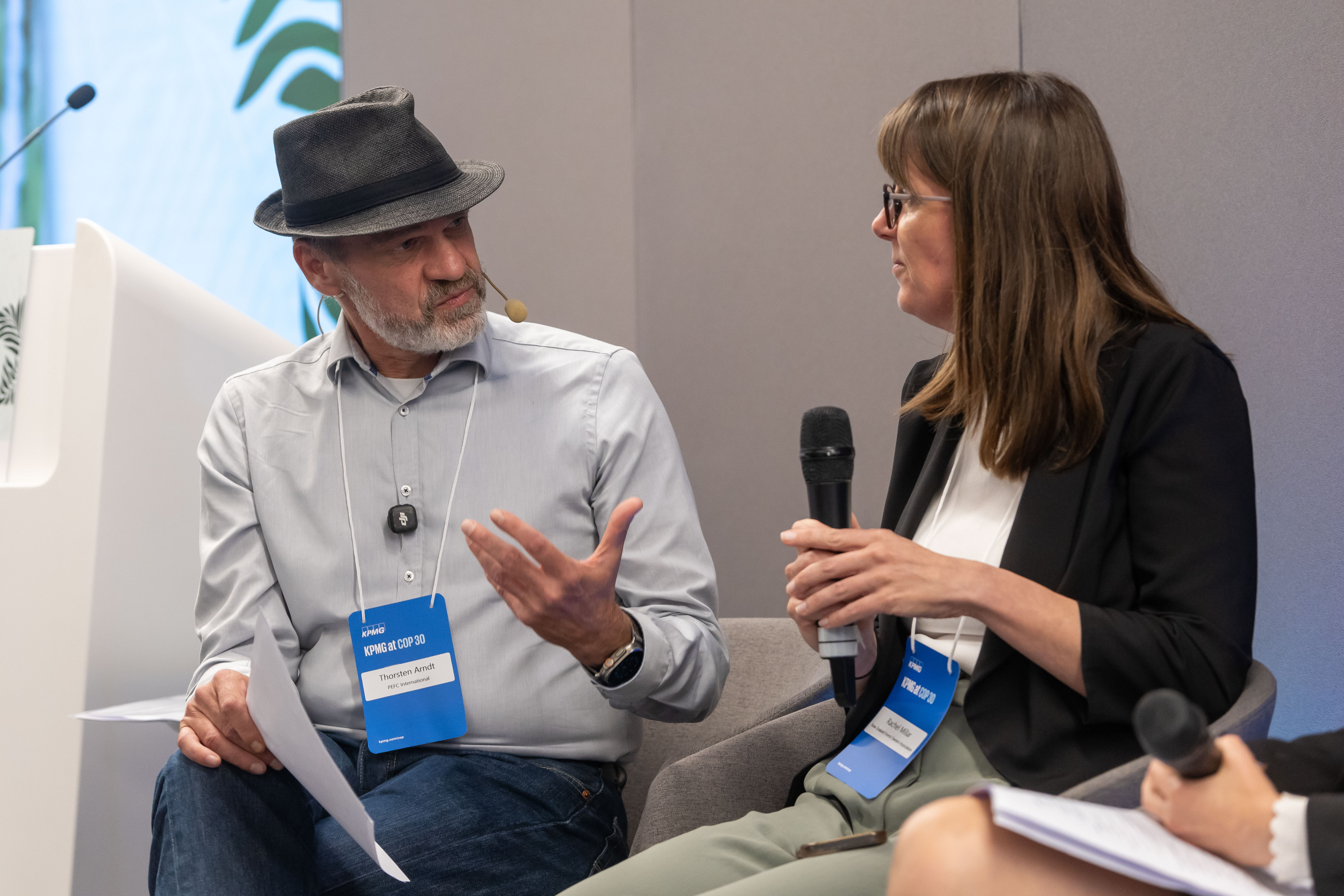The Future of Certification: From Proving Practice to Demonstrating Impact
How must forest certification evolve as the expectations placed on it expand beyond compliance and into the data-driven world of natural-capital accounting?
The Future of Certification: From Proving Practice to Demonstrating Impact
14 November 2025 Event report
How must forest certification evolve as the expectations placed on it expand beyond compliance and into the data-driven world of natural-capital accounting? That question framed a spirited discussion at the ISFC & Ibá Pre-COP30 Symposium in São Paulo, moderated by Thorsten Arndt of PEFC International.
“For thirty years, certification has been our ring of power,” Arndt said, opening the session with a Tolkien metaphor.
“It’s precious, but for too long it has made itself invisible. Now it must show its true value.”
Thorsten’s metaphor captured the mood: certification has earned global recognition for ensuring responsible forest management, but it now faces evolving expectations to demonstrate its real-world outcomes for nature, climate, and communities alike, and to make those outcomes visible in financial and accounting systems.
From good practice to measurable results
Dr Stephanie Hime, Managing Director of Little Blue Research and project lead for the new ISO 14054 standard on natural-capital accounting, said the operating environment for sustainability systems is shifting fast.
Financial and environmental information are converging, driven by frameworks such as TNFD.
Certification, she noted, already produces verified data but must evolve to show change over time and connect that evidence to decision-making and value creation.
Her ISO co-author Ece Özdemiroglu, Director of eftec, agreed that certification and natural-capital accounting share a foundation of structured data and assurance. Yet she warned against reducing complexity to a single number.
In her view, the next stage for both accounting and certification is to embrace complexity while making it transparent: documenting how scope and methods are chosen, explaining the reasoning behind data and assumptions, and aligning with global principles without prescribing rigid techniques.
Corporate experience: linking disclosure and practice
Helena Pavese, Head of Environment at Suzano, described how the company is piloting TNFD-aligned approaches across Brazil’s diverse forest landscapes.
Certification, she said, remains vital for ensuring compliance and credibility, but it rarely addresses the dependencies, risks, or opportunities revealed by natural-capital assessments.
She sees the two systems as complementary: certification grounding practice at site level, TNFD expanding the lens to landscapes and supply chains.
Pavese warned, however, that outdated governance structures slow innovation. Standards conceived in the 1990s, she said, struggle to integrate modern tools such as automation, data analytics, or biotechnology. To stay relevant, certification systems will need more agile governance capable of embracing technological advances that can make assurance faster, cheaper, and more informative.
Smallholders, technology, and trust
From the other side of the Pacific, Rachel Millar of the New Zealand Forest Owners Association highlighted a different challenge: inclusion. Most small growers in New Zealand, she said, remain outside certification despite participating in the national emissions-trading scheme. Helping them join, and equipping them with digital tools, would make certification more representative and resilient.
Millar also connected certification to social licence. After severe storms caused widespread damage, forestry faced public backlash and the temporary loss of certificates in some regions. Rebuilding credibility, she argued, will require certification bodies to communicate data and achievements more proactively, demonstrating to the public how certified forests perform under real-world stress.
Governance and the path ahead
Across the panel, one idea kept resurfacing: certification must evolve faster, through more flexible governance, stronger data management, and integration with disclosure frameworks.
Özdemiroglu called for governance that encourages learning by doing - piloting, scaling, and improving rather than freezing standards in time. Hime added that the next step is clear: certification must demonstrate impact in measurable, decision-useful terms, linking verified outcomes to environmental and financial performance. Pavese and Millar both pointed to governance reform as the lever that can make such change possible.
Closing the session, Arndt returned to his metaphor that had framed it from the start. Certification, he said, has long been a “precious ring” - powerful but often invisible. “We know the ring is precious,” he concluded, “but it no longer makes us invisible. The next story is still being written - the Lord of Certification - and its strength will lie in how we use that power to deliver for nature, climate, and people.”
At a time when markets, investors, and policymakers are demanding measurable outcomes for nature and climate, the panel’s message was clear: certification must evolve from a mark of responsible practice into a trusted generator of evidence - one that connects the forest floor to the balance sheet and keeps trust alive in an increasingly data-driven world.



